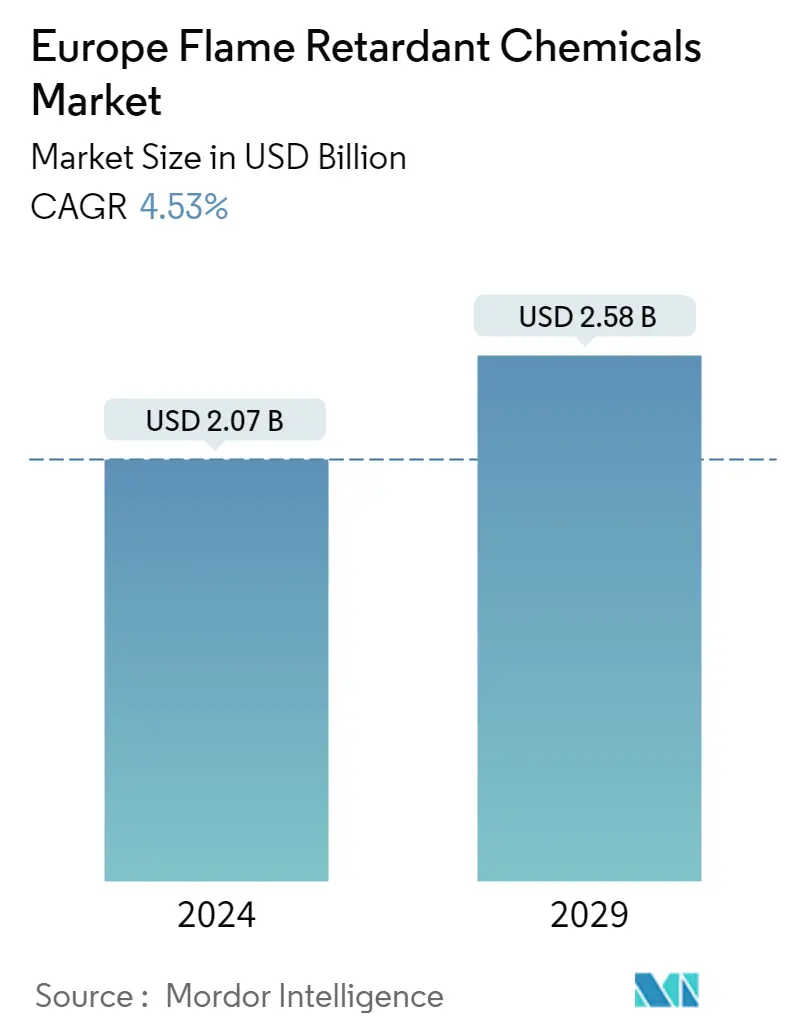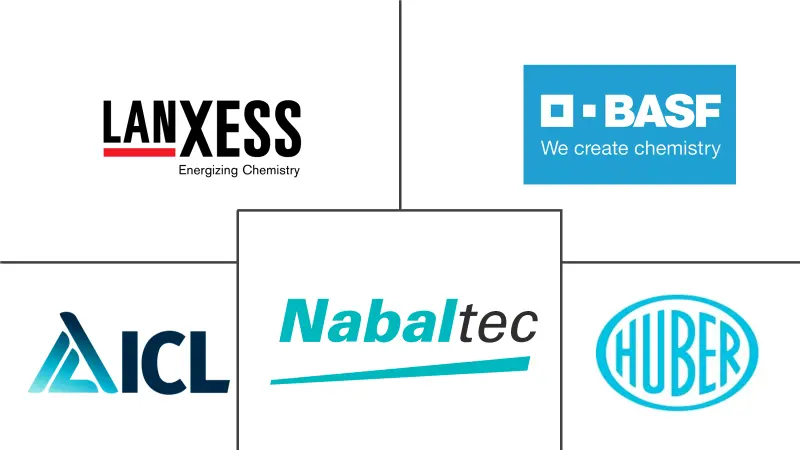Market Size of Europe Flame Retardant Chemicals Industry

| Study Period | 2018 - 2028 |
| Base Year For Estimation | 2022 |
| Market Size (2023) | USD 1.98 Billion |
| Market Size (2028) | USD 2.47 Billion |
| CAGR (2023 - 2028) | 4.53 % |
| Market Concentration | Medium |
Major Players
*Disclaimer: Major Players sorted in no particular order |
Need a report that reflects how COVID-19 has impacted this market and its growth?
Europe Flame Retardant Chemicals Market Analysis
The Europe Flame Retardant Chemicals Market size is expected to grow from USD 1.98 billion in 2023 to USD 2.47 billion by 2028, at a CAGR of 4.53% during the forecast period (2023-2028).
The European flame retardant chemical market was negatively impacted by COVID-19 in 2020. However, post-COVID-19 pandemic, the construction industry is recovering fast and is estimated to rise in the coming years, stimulating the demand for the flame retardant chemical market.
- Rising consumer electrical and electronic goods manufacturing, rising safety standards in building construction, and rising living standards in Eastern European countries will likely drive the demand for flame-retardant chemicals.
- Conversely, environmental and health concerns regarding brominated flame retardants are expected to hinder the market's growth.
- Nevertheless, the rising awareness of environment-friendly flame retardants and active R&D of non-halogenated flame retardants are projected to create lucrative growth opportunities for the studied market.
- Germany dominates the flame retardant chemicals market and will also witness the highest CAGR during the forecast period.
